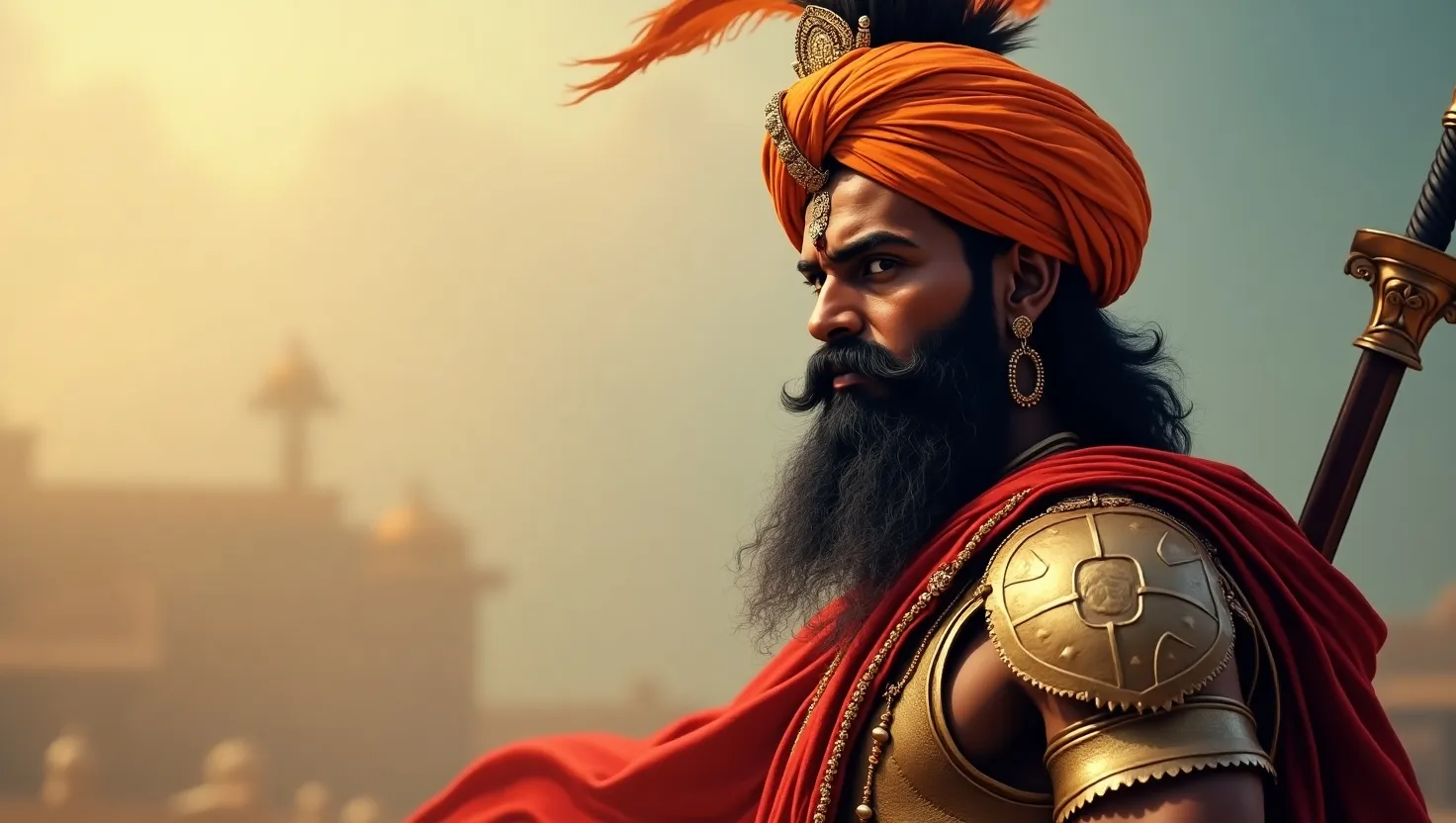UPSC
Exam Nugget
Shivaji’s Lasting Impact: A Revolutionary Legacy
Last Updated
2nd April, 2025
Date Published
2nd April, 2025
Share This Post With Someone

Context:
Published on April 1, 2025, in The Hindu, this article by Vaibhav Purandare explores the radical and enduring legacy of Chhatrapati Shivaji Maharaj, a 17th-century Maratha leader who challenged Mughal dominance. It highlights his military innovations, social reforms, and progressive governance, offering a comprehensive view of his contributions to Indian history as of April 1, 2025.
Key Points:
- Opposition to Aurangzeb: Shivaji mounted a famous resistance against Mughal Emperor Aurangzeb’s expansionism, beginning as a warrior in the 1640s and rising to a self-made king, establishing the Hindavi Svarājya (Indian autarky).
- Military Leadership: Leading from the front, he inspired loyalty among his soldiers, many of whom sacrificed their lives for him. By the mid-1660s, his forces grew from a small band to tens of thousands.
- Physical Description: French traveler Jean de Thévenot described Shivaji as “short and tawny, with quick eyes that shew a great deal of wit,” noting his frugal habit of eating once daily with his troops.
- Clemency and Valor: Abbé Barthélemy Carré likened Shivaji to Julius Caesar, praising his swift movements, clemency, and generosity, which won over defeated foes.
- Diverse Army: Shivaji’s forces were meritocratic, including Marathas (e.g., Hambirrao Mohite), Kolis (e.g., Tanhaji Malusare), CKPs (e.g., Baji Prabhu Deshpande), Brahmins (e.g., Ragho Atre), nomads like Narikuravars, and Muslims like Siddi Hilal from Africa’s Bantu community.
- Naval Inclusion: His navy heavily recruited Koli fishermen-turned-soldiers, showcasing his inclusive approach to military recruitment across castes and communities.
- Merit-Based Governance: At his death, Shivaji’s Svarājya was defended by 240 forts, none led by hereditary nobles, reflecting his progressive, merit-driven administration.
- Religious Flexibility: He permitted reconversion to Hinduism (e.g., Netaji Palekar, Bajaji Nimbalkar), a reform predating Arya Samaj by two centuries, promoting social mobility.
- Sati Abolition: On his deathbed in 1680, Shivaji declared that his wives should not be forced into sati, as recorded by Cosme de Guarda in 1695, advocating voluntary choice over compulsion.
- Administrative Reforms: In 1677, he sponsored the Rājavyavahārakośa, a Sanskrit lexicon replacing over 1,500 Persian administrative terms with Sanskrit equivalents, reducing Mughal linguistic influence.
- Language Promotion: Marathi, in Devanāgarī or Mōdī scripts, became the court and literary language, fostering regional identity and accessibility.
- Caste Controversy: Recent debates over Shivaji’s caste identity are seen as a disservice to his legacy, given his diverse coalition of lower castes, peasants, and tribals, transcending social hierarchies.
- Enduring Influence: Shivaji’s radical governance and resistance against centralized power revolutionized Indian society, leaving a legacy of inclusivity, meritocracy, and cultural assertion.
Key Terms:
- Hindavi Svarājya: Shivaji’s vision of an autonomous Indian state free from foreign rule.
- Aurangzeb: Mughal Emperor whose expansionism Shivaji opposed in the 17th century.
- Meritocracy: A system where leadership is based on ability, not birthright, as seen in Shivaji’s forts.
- Sati: The practice of widow immolation, which Shivaji opposed forcing upon his wives.
- Rājavyavahārakośa: A 1677 Sanskrit text replacing Persian terms, symbolizing administrative indigenization.
- Koli: A traditional fishing community integrated into Shivaji’s naval forces.
- Narikuravars: A nomadic group from Maharashtra-Tamil Nadu, part of Shivaji’s diverse army.
- Mōdī Script: A cursive Marathi script promoted under Shivaji’s rule for official use.
Link To The Original Article – https://www.thehindu.com/books/the-radical-and-enduring-legacy-of-shivaji/article69399899.ece